I had my hair bleached to white and dyed it purple a little while back. Even though I read a ton of articles about how what to expect and how to look after bleached Asian hair, I was still really surprised by the change in haircare required! Here’s my tips and advice on what to expect when you get extreme bleaching done.
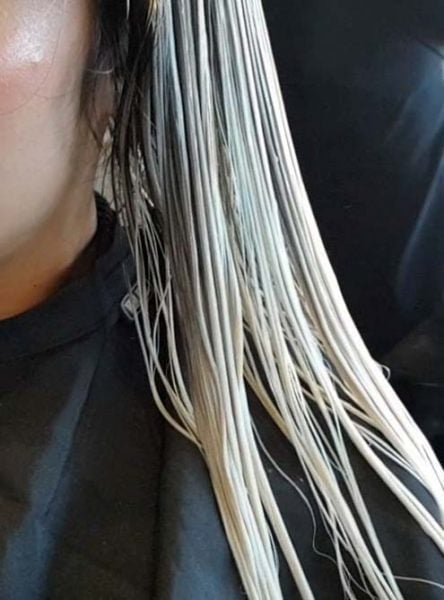
Your hair will feel completely different
Pre-bleach, my hair was smooth, shiny and strong, even when I didn’t use much conditioner. Like most Asian hair, it had low porosity, which meant the cuticle of the hair formed a tight layer on the surface of the hair. It felt pretty much the same wet and dry, and was pretty stiff and springy.
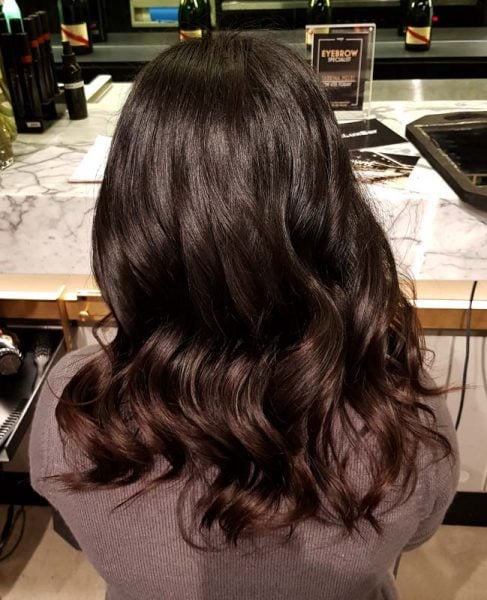
Fast forward to post-bleach. Bleached hair is a lot more porous, so the cuticle has lots of gaps in it, and water can enter and leave hair very easily. My hair is now massively elastic and floppy when wet, almost like wet noodles. When dry, the texture varies from soft and smooth to dry and straw-like, depending on what products I’ve used on it.

On the upside, my hair feels a lot softer now on a good day than pre-bleach – but that’s only on good days. Luckily good days are more frequent now that I’ve gotten to grips with my new haircare routine!
Speaking of that…
Your haircare routine will change
Before I bleached my hair, it was largely easy to look after, and honestly sort of boring. My pre-bleach routine involved washing my hair every day or two with pretty much any shampoo and conditioner, then drying with a hairdryer and dragging a brush through it in the morning – brushing would take three seconds and forceful brushing would cause zero breakage. That is no longer a thing.
I wash my hair a lot less: twice a week now. Generally this will involve an Olaplex treatment, double shampoo and a dye-laced hair mask, which then gets rinsed out in cold water. If I’m feeling lazy I’ll rinse it out with warm water in the shower, but when I do that I really feel the difference in my hair.
Related post: How Does Olaplex Hair Treatment Work? (with Video)
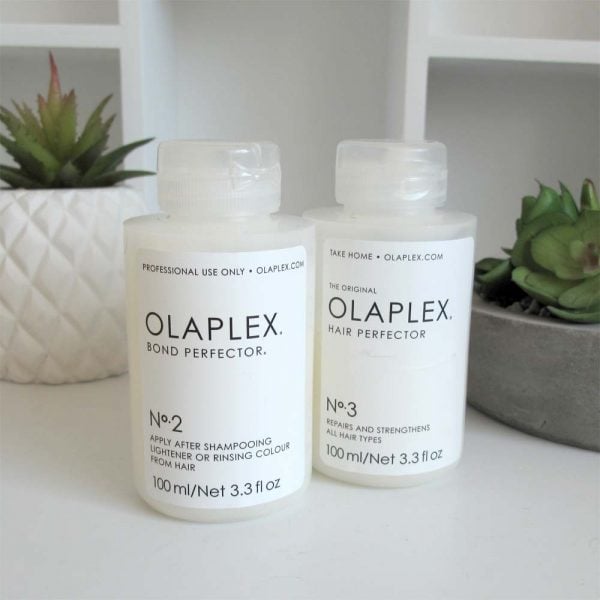
Drying also takes a lot longer since my hair is now basically a sponge, although using an Aquis microfibre hair towel definitely helps.
Related post: How do Aquis Towels work? Science and review
Leave-in products are a must now, and with the higher porosity my hair drinks up product much faster. Whereas before I had to be careful with the amount of product I added to my hair, I don’t need to worry about applying too much anymore – a greasy mess will absorb and look normal after about 5 minutes! On the flip side, it means I do need a lot more product than before.
One really nice change I noticed is that my hair holds a style for much longer. Natural Asian hair is notorious for not being able to hold a curl, but after bleaching, I only have to curl my hair once and it’ll look great for the next few days if I refresh it with a bit of hair product. My hair style lasts through showers, exercising, hot yoga and sleeping, and in fact it looks better after the first day!
Split ends and breakage everywhere
Before bleaching, my hair was pretty hardy and sort of boring. I did have some box dye on the ends which made it a bit fragile and prone to split ends, but before the box dye finding a split end was a rare occasion.
After bleaching: so much delicate handling. I need to use leave-in products a lot more to stop my hair from snagging on everything. Sometimes I can literally hear the strands breaking when I drag a brush too forcefully through my hair, or when I take out a tight hair tie. It’s actually kind of fun finding so many weird split ends! On the other hand, every time a hair breaks I feel like I’m losing a dollar of my expensive bleach job.
Here’s one of the most impressive split ends I’ve ever seen in my life – 10 splits!
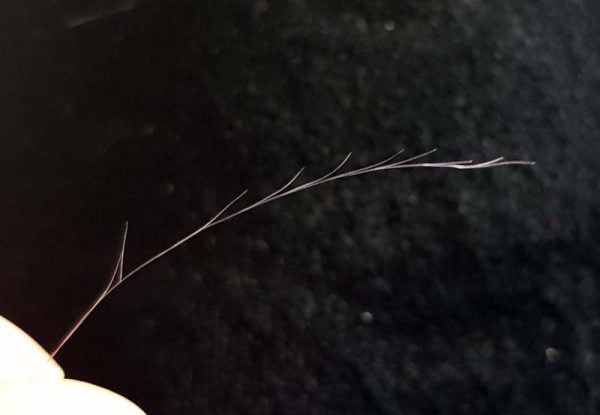
Your hair will like different ingredients
My hair used to be pretty un-fussy – any shampoo would do, and any dimethicone-heavy conditioner made my hair feel nice (although the best was still Dove Intensive Repair conditioner). Very few products were especially good or especially bad.
Now, the wrong product will mess up my hair for at least the rest of the day, sometimes longer! I’m going through the process of working out the products and ingredients that will make my hair feel nice. So far, cetearyl alcohol, amodimethicone, sunflower oil and glycerin have been winners, while anything with a lot of SD alcohol is guaranteed to make my hair dry out and strip the colour.
My current favourite products: Ouai Rose Hair & Body Oil, Paul Mitchell Shampoo One, Original & Mineral Shampoo.
Related post: Amodimethicone: The Science of My Favourite Hair Ingredient
Avoiding brassiness needs constant vigilance
The biggest issue for me was with the colour. Asian hair gets brassy quickly (like… 4 days quickly), so my regimen includes a whole bunch of steps targeted at getting rid of the yellow tones in my hair.
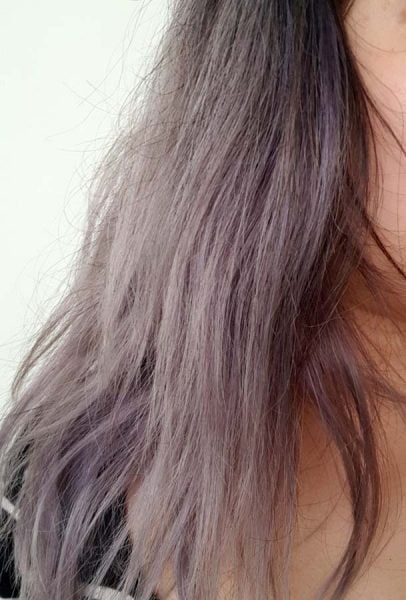
Purple shampoos and treatments are a must for any extremely bleached hair, unless you actually like the yellow colour, or you’ve picked a colour that disguises it well! I use Fanola No Yellow Shampoo once a week.
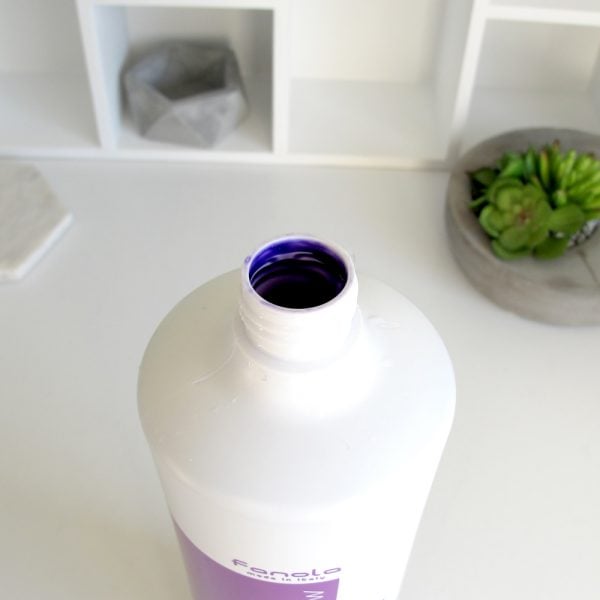
Once every week or two (on a weekend), I’ll redye my hair as well with a semi-permanent (direct) dye. Purple is a colour that fades pretty quickly on most people, so be prepared for a lot of redyeing if you also pick a colour that fades!
Related post: How does hair dye work?
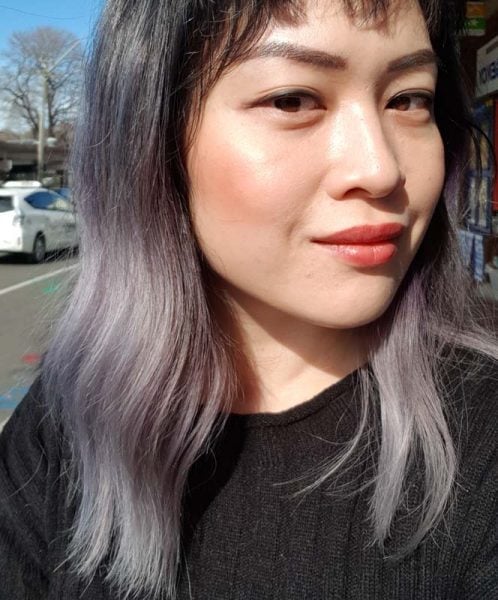
Also these are Day 3 waves.
However, redyeing isn’t as big a job as I thought it would be. It’s basically a prolonged hair mask (10+ minutes) that you’ll have to rinse out in cold water. If you wear dark clothing, have a dark towel, wear gloves and rinse your hair overhead in a bathtub or sink, staining isn’t even a big issue. And because direct dyes don’t involve opening up the hair cuticle, you can leave the dye on for longer without risking any hair damage – if anything, it makes your hair feel nicer.
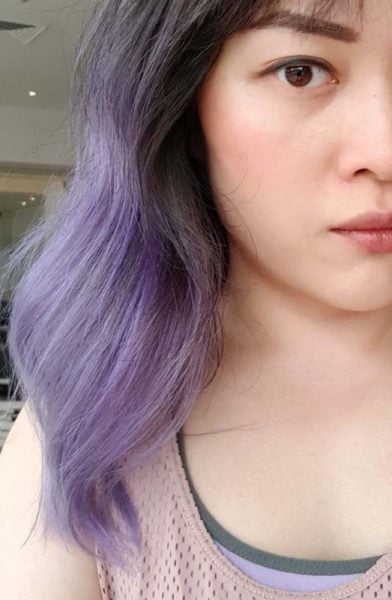
I’ve been using Arctic Fox Purple Dream and Poseidon mixed in with conditioner. I try to use a conditioner with main ingredients that match the main ingredients in the dye (cetearyl / stearyl / cetyl alcohol, essentially), so I’ve been using Herbal Essences conditioner.
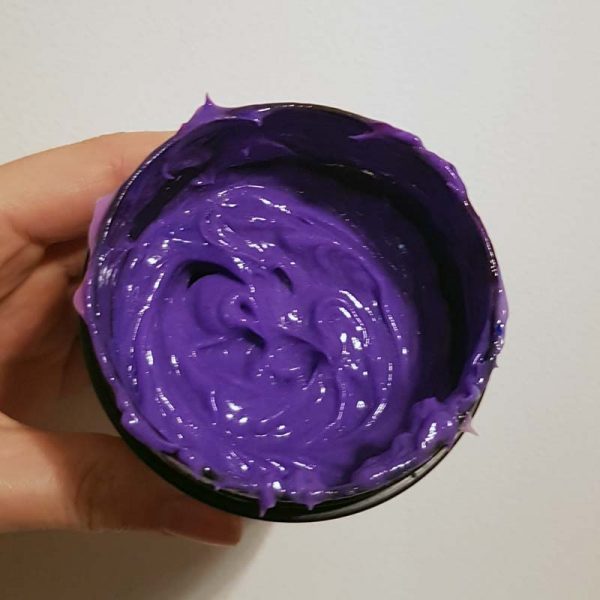
Your make-up and wardrobe might need to change
The convenient thing about black hair is that it matches everything. Now with purple hair, I always feel more fashionable by default – but I wear black clothes a lot more, and I’m not sure when I can wear my jungle jacket again without feeling too over-the-top.
I’ve also found that my hair makes my facial features look washed out, especially when the purple fades down to a muted grey. As a result I’m wearing darker make-up than before on a daily basis.
For example, the lipstick in the photo below used to look too dark to be natural on me – now it barely looks like I’m trying!
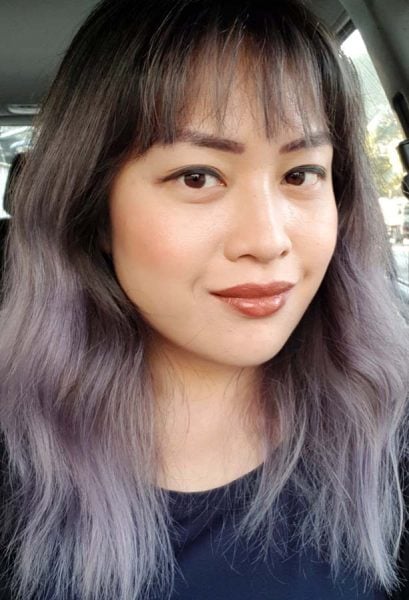
Overall
I have no regrets at all about dyeing my hair, and kind of wish I did it sooner! I was actually prepared for a lot more upkeep, but since a lot of the steps are leave-in-and-go-about-your-day, I do everything on a weekend day where I’m pottering around the house anyway and it fits in nicely with my routine.
I’ll do a full overview of my haircare routine soon, when I’ve tried a few more things out!
Some of the mentioned products were provided for editorial consideration, which did not affect my opinion. This post also contains affiliate links – if you decide to click through and support Lab Muffin financially, thank you! For more information, see Disclosure Policy.



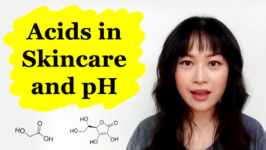
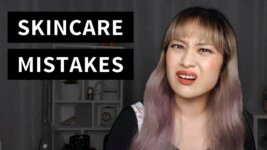
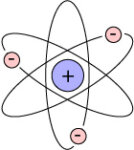
Woohoo! Awesome post Michelle. I have gone through a similar change a couple years ago and have finally gotten use to having dry/fragile ends as opposed to my natural strong Asian hair! I had purple/grey for a long time but it just faded so darn quick and went brassy within a week, so I had to use purple shampoo/conditioner every second wash. My favorite purple shampoo and conditioner is BRITE Organix, which you can normally get at Priceline. My hair is currently blue at the ends. It is super bright in colour and has barely faded at all! Have had it for a month and a half and I love it. Although it did leak for the first three weeks (blue pillow, but washes out). It’s nice having a colour that lasts and doesn’t need touching up but I’m starting to get worried it’ll never fade since it’s only meant to last 8 washes, oh well LOL. Other colors I’ve tried (purple, pink, red, or anything pastel) always fade relatively quickly, so it is nice to have a low maintenance colour that still looks popping.
I saw the blue in your videos, I love it! I’m a little worried about the staining too, I’ve heard a lot of stories, but it’s definitely on my list as an option when I want something lower maintenance!
ALSO! If you hair feels like straw, I LOVE the muk ultra soft shampoo and 1 minute treatment. Will change your life mate.
P.S. does your hair hate pastel colour as much as mine? It’s seems to repel them ?
Ooh I’ll have to look into that! At the moment I’m loving the Make Hair Soft mask but I think they’ve discontinued it 🙁
I’m pretty much re-dyeing it once a week but it’s mostly because of the brassiness showing through – I’ve only tried purple so far!
Michelle, I wore my hair hot pink for 30+ years; here’s a tip you might find useful: wear the dye to bed with your head wrapped in … cling film? Is that what you call it in Australia? It’s the thin plastic wrap you cover food with. Leaving the dye on while you sleep, where it can get warm, will allow it to last quite a bit longer than the ten-fifteen minutes the label suggests.
(I thought I was gonna miss the color, but the color of my wardrobe doesn’t matter now; I can wear sooo many more thngs!)
Enjoy your funky hair color!
Thanks for the tip! I’ll have to try that out 🙂
My virgin hair was fine, thin, limp, and straight, but otherwise nothing like your gorgeous Asian hair. The natural color lifts quickly and easily from mine, so bleaching is relatively easy, although still somewhat damaging. Recently, I have been using Olaplex and haven’t decided whether it helps a lot or not. Wondering if you used Olaplex when you made your color changes?
The hairdresser used Olaplex in the bleach and used Number 2 afterwards, then I’m been using both 2 and 3 at home.
It looks gorgeous, Michelle. How long did the bleach processing take?
I have very dark brown hair, highlighted, not asian but naturally soft and floppy. I have always struggled to keep the orange under control. Purple shampoo males very little difference.
What does help is blue, and i was toning it myself by making w semi with a blue pro tube and 1.5 per cent hp. A bit drying. I switched to intermittent direct semi, too, but using blue to tone. I bought Joico colour butter, and I cut it with Dove oil care conditioner.
Colour in a tub, for the win.
Thanks! It took about 7 hours all up – the bleaching itself took about 4 or 5 hours.
I tried to bleach my hair once… it took 5 hours with minimal lightening – BUT my scalp was burned and scabbed over after a few days. I think I have one of the thickest slipperiest asian hairs around, works itself out of a braid in seconds. I used to wash my hair with ivory soap and it was exactly the same. Conditioner doesnt affect it, somewhat softer when wet but it’s the same as non conditioned when dry. I want to bleach it again just so it will be a bit more porous and hold a style better.
Oh what I would give to have Asian hair! I have Eastern European hair, fine, flimsy and straight (with product it will hold a curl for an hour, if it’s humid, forget it, I don’t bother). Plus I color my hair – I’ve just gone through transition from red to brown to lighter brown on my quest to go natural since grey is coming in fast and furious (but not fast enough to be gray) and my hair has taken a beating. I’m always on the lookout for good products, so I really enjoyed this post since your experience now is my normal.
People say that, but Asian hair is stiff and will straighten itself out of a braid or bun or anything. It will poke up in spikies everywhere. It is one color, one style. Boring.
Hi there:) May I just check with you the ratio of which you mixed the arctic fox dyes and conditioner? Thank you!
I don’t use a set amount – I just mix it til it looks good! At the moment the ratio is probably around 1:4.
Forget about using just any shampoo and conditioner for your bleached hair. You will need a special purple shampoo to keep the yellow tones away. You will also need a good leave-in product to keep your hair smooth and fight frizz.
Not necessarily – you only need to use purple shampoo if you want to reduce yellow tones. Overtoning hair can make it too cool, or even purple, which a lot of people don’t want.